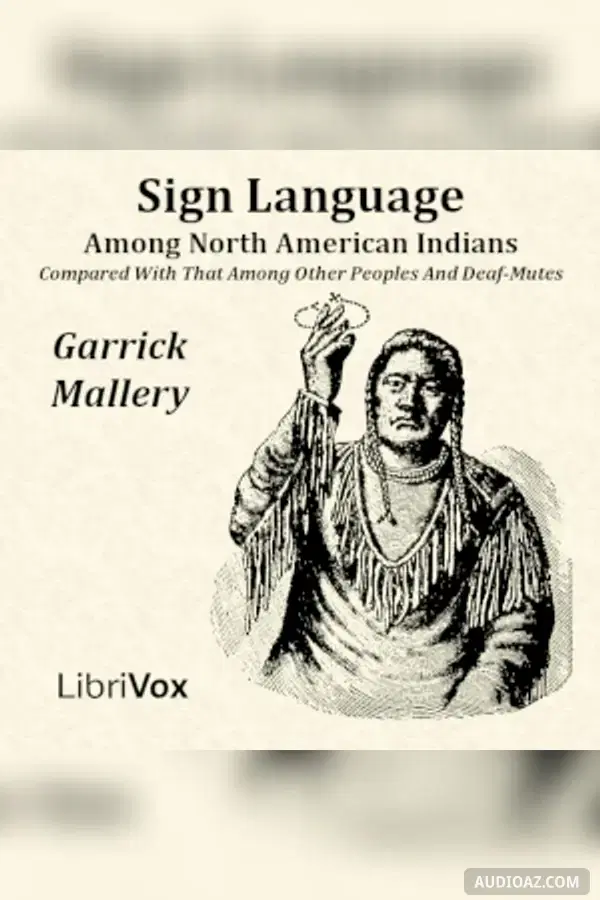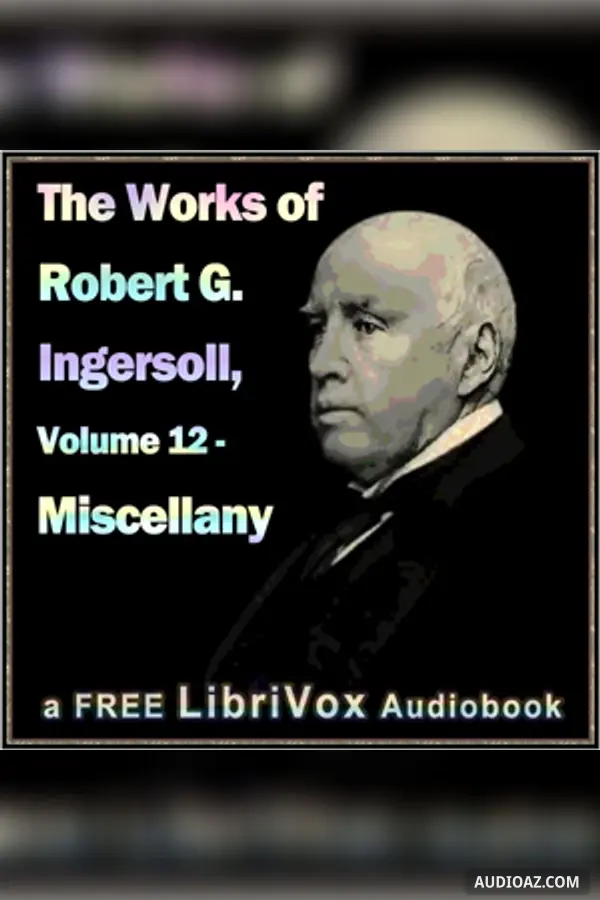
Sign Language Among North American Indians Compared With That Among Other Peoples And Deaf-Mutes - Free Audiobook
Author(s): Garrick Mallery,
Language: English
1 / 74Introductory
00:0000:00
74 Chapter(s)
- 1. Introductory
- 2. Divisions of Gesture Speech
- 3. The Origin of Sign Language, Introduction
- 4. The Origin of Sign Language, Gestures of the Lower Animals
- 5. The Origin of Sign Language, Gestures of Young Children
- 6. The Origin of Sign Language, Gestures in Mental Disorder
- 7. The Origin of Sign Language, Uninstructed Deaf-Mutes
- 8. The Origin of Sign Language, Gestures of the Blind
- 9. The Origin of Sign Language, Loss of Speech by Isolation
- 10. The Origin of Sign Language, Low Tribes of Man
- 11. The Origin of Sign Language, Gestures as an Occasional Resource
- 12. The Origin of Sign Language, Gestures of Fluent Talkers
- 13. The Origin of Sign Language, Involuntary Response to Gestures
- 14. The Origin of Sign Language, Natural Pantomime
- 15. Some Theories Upon Primitive Language, Introduction
- 16. Some Theories Upon Primitive Language, Conclusions
- 17. History of Gesture Language
- 18. Modern Use of Gesture Speech, Introduction
- 19. Modern Use of Gesture Speech, Use By Other Peoples Than North American Indians
- 20. Modern Use of Gesture Speech, Use By Modern Actors and Orators
- 21. Our Indian Conditions Favorable to Sign Language
- 22. Theories Entertained Respecting Indian Signs, Introduction
- 23. Theories Entertained Respecting Indian Signs, Not Correlated With Meagerness of Language
- 24. Theories Entertained Respecting Indian Signs, It's Origins From One Tribe or Region
- 25. Theories Entertained Respecting Indian Signs, Is The Indian System Special and Peculiar
- 26. Theories Entertained Respecting Indian Signs, To What Extent Prevalent as a System Part 1
- 27. Theories Entertained Respecting Indian Signs, To What Extent Prevalent as a System Part 2
- 28. Theories Entertained Respecting Indian Signs, Are Signs Conventional or Instinctive, Introduction
- 29. Theories Entertained Respecting Indian Signs, Are Signs Conventional or Instinctive, Classes of Diversities in Signs
- 30. Results Sought in The Study of Sign Language, Introduction and Practical Application
- 31. Results Sought in The Study of Sign Language, Relations to Philology
- 32. Results Sought in The Study of Sign Language, Sign Language with Reference to Grammar
- 33. Results Sought in The Study of Sign Language, Gestures Aiding Archaeologic Research
- 34. Notable Points for Further Researches, Introduction and Invention of New Signs
- 35. Notable Points for Further Researches, Dangers of Symbolic Interpretation
- 36. Notable Points for Further Researches, Signs Used by Women and Children
- 37. Notable Points for Further Researches, Positive Signs Rendered Negative
- 38. Notable Points for Further Researches, Details of Positions of Fingers
- 39. Notable Points for Further Researches, Motions Relative to Parts of the Body
- 40. Notable Points for Further Researches, Suggestions for Collecting Signs
- 41. Mode in Which Researches Have Been Made
- 42. List of Authorities and Collaborators
- 43. Extracts from The Dictionary, Part 1
- 44. Extracts from The Dictionary, Part 2
- 45. Extracts from The Dictionary, Part 3
- 46. Extracts from The Dictionary, Part 4
- 47. Tribal Signs, Tribal Names
- 48. Tribal Signs, Proper Names
- 49. Tribal Signs, Phrases
- 50. Dialogues, Tendoy-Huerito Dialogue
- 51. Dialogues, Omaha Colloquy
- 52. Dialogues, Brule Dakota Colloquy
- 53. Dialogues, Dialogue Between Alaskan Indians
- 54. Dialogues, Ojibwa Dialogue
- 55. Narratives, Introduction
- 56. Narratives, Natci's Narrative
- 57. Narratives, Patricio's Narrative
- 58. Narratives, Na-wa-gi-jig's Story
- 59. Discourses, Address of Kin Che-ess
- 60. Discourses, Tso-Di-a-ko's Report
- 61. Discourses, Lean Wolf's Complaint
- 62. Signals
- 63. Signals Executed by Bodily Action
- 64. Signals in Which Objects are Used in Connection with Personal Action
- 65. Signals Made When The Person of The Signalist is Not Visible, Smoke Signals Generally
- 66. Signals Made When The Person of The Signalist is Not Visible, Smoke Signals of The Apaches
- 67. Signals Made When The Person of The Signalist is Not Visible, Foreign Smoke Signals
- 68. Signals Made When The Person of The Signalist is Not Visible, Fire Arrows
- 69. Signals Made When The Person of The Signalist is Not Visible, Dust Signals
- 70. Signals Made When The Person of The Signalist is Not Visible, Notes on Cheyenne and Arapaho Signals
- 71. Scheme of Illustrations
- 72. Outlines for Arm Positions in Sign Language
- 73. Types of Hand Positions in Sign Language
- 74. Examples
About
A comparative study of sign language among Native American peoples as it relates to other peoples of the 19 century world. - Summary by afutterer
Comments
Related Audiobooks
Tags: Sign Language Among North American Indians Compared With That Among Other Peoples And Deaf-Mutes audio, Sign Language Among North American Indians Compared With That Among Other Peoples And Deaf-Mutes - Garrick Mallery audio, Education audio, Language learning audio, Non-fiction audio, free audiobook, free audio book, audioaz






